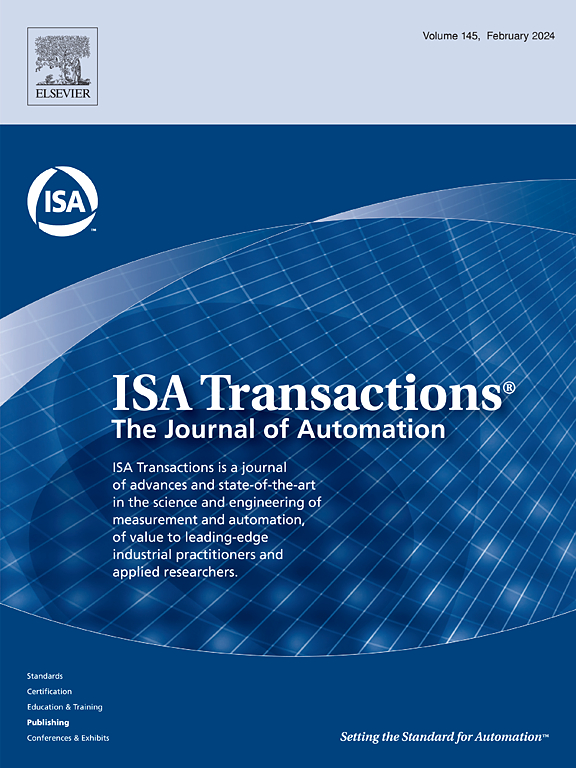信道衰落和数据丢失网络系统的预测迭代学习控制。
IF 6.5
2区 计算机科学
Q1 AUTOMATION & CONTROL SYSTEMS
引用次数: 0
摘要
针对具有数据丢失和衰落信道的网络系统,提出了一种独特的基于通用平均(GA)的预测迭代学习控制方法。目的是通过预测误差消除数据丢失和衰落信道的不利影响。首先,在预测模型和控制器中引入一种利用所有历史信息的平均技术,只有当数据成功传输时才更新控制输入。然后,在随机框架下,采用复合能量函数方法得到了基于ga的PILC的平均跟踪误差沿迭代域的收敛性。最后,通过理论分析和两个仿真算例验证了基于遗传算法的PILC方法的有效性。本文章由计算机程序翻译,如有差异,请以英文原文为准。
Predictive iterative learning control based on averaging technology for networked systems with fading channels and data loss
This paper proposes a unique general averaging (GA)-based predictive iterative learning control (PILC) method for networked systems with both data loss and fading channels. The objective is to eliminate the adverse effects of data loss and fading channels via prediction error. First, an averaging technique using all historical information is introduced into the prediction model and controller, and the control input is updated only when the data is successfully transmitted. Then, the convergence of the mean tracking error along the iterative domain of the GA-based PILC is obtained using a composite energy function method in a stochastic framework. Finally, the effectiveness of the proposed GA-based PILC method is validated through theoretical analysis and two simulation examples.
求助全文
通过发布文献求助,成功后即可免费获取论文全文。
去求助
来源期刊

ISA transactions
工程技术-工程:综合
CiteScore
11.70
自引率
12.30%
发文量
824
审稿时长
4.4 months
期刊介绍:
ISA Transactions serves as a platform for showcasing advancements in measurement and automation, catering to both industrial practitioners and applied researchers. It covers a wide array of topics within measurement, including sensors, signal processing, data analysis, and fault detection, supported by techniques such as artificial intelligence and communication systems. Automation topics encompass control strategies, modelling, system reliability, and maintenance, alongside optimization and human-machine interaction. The journal targets research and development professionals in control systems, process instrumentation, and automation from academia and industry.
 求助内容:
求助内容: 应助结果提醒方式:
应助结果提醒方式:


